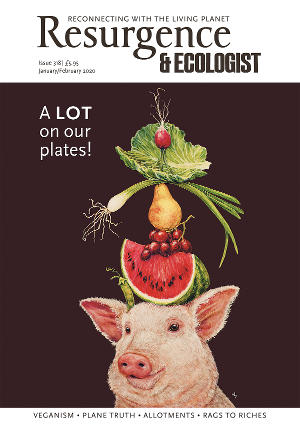Invasive Aliens would be a good name for a sci-fi film, so it’s no great surprise when the pages of this book open onto a crime scene: “Graham paced up and down, his attention focused on the boundary hedges. Drawn by reports of sightings in the area, his team had last week netted several specimens of the invader … A reliable line of sight had been achieved and further samples dispatched for DNA analysis.” The fugitive at large is the Asian hornet, stealth fighter of the insect world. This prolific killer lingers at a hive exit, decapitating native bees as they attempt to pass, before taking control of the hive. The UK government operates a zero-tolerance policy of eradicating this species – when it can be found.
Surely the case is clear and all invasive species should be similarly destroyed? Of course it is far more complex than that. Dan Eatherley deftly unpicks the complicated, globe-sweeping movement of species through history, in this confidently written and impeccably researched book. As I read, I began to look afresh at the world around me and challenge my cosy assumptions about the Britishness of our countryside. I knew that pheasants, muntjac deer and London’s growing flock of ring-necked parakeets are not native to the UK, but I didn’t know their stories, and I certainly had not appreciated how many ‘British’ species are not truly native.
The field poppy, that Remembrance Day symbol of bloodshed and renewal, is in fact from the Middle East. Snowdrops, horse chestnut trees and daffodils are long-term immigrants. The fallow deer was brought here to adorn medieval parks, and the little owl was captured in Europe and released by aristocrats, establishing a British population. Some introductions were deliberate, whether for pets or pest control. Many were culinary, such as tomatoes and potatoes, or ornamental, like the pretty rhododendron (which vigorously out-competes other plants). The history of the rabbit proved especially fascinating – who knew they were once a status symbol? Meanwhile, many species’ movements were accidental: stowaways in boats, like the brown rat, or the quagga mussels on the hulls of ships, now displacing native ones with their hogging of the river bed.
I have always felt uncomfortable with the labelling of species that we don’t deem ‘from round here’. In a world where accepting diversity of humans is of paramount importance, there is something disturbing about the discourse surrounding creatures from elsewhere: ‘aliens’ that are aggressive, invasive and dangerous, causing species pollution, and requiring eradication. It can feel very xenophobic. Thankfully, Eatherley addresses this issue, discussing how the language used perpetuates the myth that we are somehow under attack, as if the creatures have some sort of strict battle plan. It is far more complicated than ‘native good, but alien bad’. Yes, some creatures have blemished the reputation of incomers: grey squirrels, signal crayfish, American mink and Japanese knotweed are a few. But the vast majority are benign and unremarkable in their integration, and some are beloved of us now. One thing is for sure: the pace and volume of species’ movement around the globe are growing.
The wonder of this ‘story of species’ is that it is our story too. A great sweeping human history told through quirky, freaky, beautiful and diverse living organisms. Nature and people are in an interlinked and forever shifting pattern of movement, whether we like it or not.







